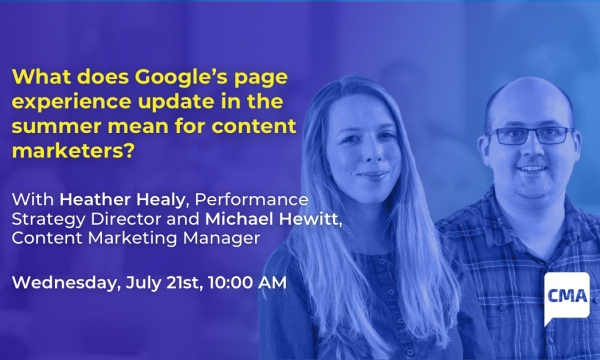The world of video is growing and more brands are asking for 90 seconds of your time, in which they’ll provide you with mind wondering, concentration grazing, visual gold; only asking for an RT, share or +1 in return.
Everybody from A-list celebrities to the local car mechanic is getting on board with the vlogging (video blogging) train as equipment becomes more affordable, distribution becomes faster and video editing software becomes easier to use.
But as more people get on board with vlogging, the more we start to see big mistakes that prevent brands from really connecting with their audiences. Video content may achieve much stronger engagement rates compared to the written word but if executed poorly, video blogging can be an expensive use of your time.
It’s an issue that goes beyond production values, graphics and sound quality, and it also goes beyond nailing your script, editing and distribution. It’s actually a core methodology that you need to get right if you are going to increase engagement, attract subscribers and succeed with your video strategy.
Here are five of the most common video production faux pars, and how you can easily avoid them:
Headhunting

Although it might seem counterintuitive to how we would react in the real world, placing the subject of video piece bang smack in the centre of the frame can feel a little intimidating. It was a technique used by noted horror directors Wes Anderson and Stanley Kubrick because it is a shot that makes viewers intimidated or distressed – probably not the aim of your campaign.
Try using the “rule of thirds”, which is a tried and tested rule in the world of photography.
Imagine, when setting up your camera, that each axis has two parallel lines running through them evenly, creating nine small frames on your viewer finder (most SLR’s have a function to display the grid on the viewfinder automatically, which can be a real help). You should then try to position your focal content (the main presenter) along one of the vertical lines and create a horizon, or ‘perspective gather’ along one of the horizontal lines. This will deliver a more pleasing composition, it’s a subtle point but extremely effective.
The painful pan

We have all seen the unmistakable swing of ‘jerk and shake’ as a camera man tries to pan across a shot using a standard photographic tripod. The shots gets snappy, jumping between frames as the camera and movement juggle for visual dominance. A little movement in a locked off camera position can be a hugely emotive device but these need to be worked into a shot strategy, rather than dished out at the convenience of the cameraman.
If you are going to be panning throughout your video, try using a fluid head tripod to control any pan, or tilt camera moves. These dedicated video tripods offer friction free directional movement for smooth following of your subject. Add a glide rail to your tripod head to introduce a gentle x axis pan, which changes the dynamic of any locked single camera shot, making the whole piece feel more alive. If you are feeling especially dynamic, try adding a dolly track to your shot-list production schedule, giving you a few meters x axis movement in you shots, and opening your field of view up dramatically.
The zoom and cut
This is a common second shot staple for many videographers, as it can be captured using one ‘locked off’ camera – a simple zoom on your main shot usually offers a slightly tighter shot offering a perfect breaker for cuts or GFX introduction.
However, be careful not to overuse this feature. Too much zoom can send the viewer into a vomit-inducing visual seesaw as the shot endlessly flips from cut to cut. A zoom lens is a privileged position of power, but with great power comes greater responsibility. Remember, you can get exactly what you need from a prime lens so if you do choose to use a zoom lens, use it wisely.
Try adding a second camera or shooting post live B-roll as your cut material. This can all be generated from a solid shot-list and paying close attention to your intended scripts. Pick your camera moves to enhance the script as a well-placed camera push or focus pull and help bring the audience deeper into your content without the need for an arbitrary zoom.
Stage fright

Corporate vlogging as part of your thought leadership strategy can be a great way of personalising your business message, making your content seem more real and less curated. However, wrapping this message up into an actual person can be a difficult decision to agree upon.
If you are planning on creating multiple pieces on regular occasions, it can be a costly exercise to hire professional on screen talent to suit sporadic small screen content. Instead, consider using team members to deliver your message. This can help humanise the story and bring a level of sincerity and professionalism to the message, which is often missing from regular written, curated PR content.
If you are creating “straight to camera” content, such as training, reviews, or educational content, try and use talent that is comfortable in front of a camera (this is a learned skill, and will come with time).
It is important to get that connection with the viewer, so don’t treat the piece like a soap-box. Instead, ease the information across in a fluid and positive manner. If you are shooting direct staff messages, such as interviews, case studies or behind the scenes content, shoot these as a third person angle. Remove the script, discuss basic topics and bullet points with your interviewee beforehand and leave the direction of conversation open to fluid discovery. If the interviewee is talking to another person, answering specific questions tend to be more conversational and fluid.
Give everyone a go. You will get certain employees who will not want to try this form of content delivery but equally, there will be plenty of volunteers too.
“To camera” talent is a difficult skill to master and it won’t be for everyone, but it’s important to let people try this out. It can be a great personal development for some to be able to reach out in this way, and can be a hugely beneficial to both them and the company.
Lighting counts

The advantage to non-locational indoor shooting is the ability to control your environment, eliminating awkward shadows and undesirable white balance issues.
Equally, if you have the opportunity to control your light in the shoot. DO.
A good quality lighting rig can be set up and running in 15 minutes and it will do wonders for your end result. There are numerous continuous light rigs available to suit any shooting budget.
It’s always better to have control over your entire lighting scenario. Choose your environment for its location and its luminescent controllability. Can you replace all the lights in this space? Using only your rig will allow you to adjust and tweak every setting to achieve the best result for you and your subject, as well as keeping this consistent across various shooting subjects and times of the day.
It is also important to play with different lighting set-ups for different styles of content.
If you are shooting a simple learning session, perhaps a flatter, brighter classroom style would be preferred? The presenter may wish to include props or accessories at a moment’s notice, so develop the rig to adapt to this additional content.
If you are shooting a “straight to camera” promotional piece, a more dramatic, focused lighting style might bring the presenter to live and add another creative dimension to the piece.
It’s a good idea to test these rigs, shooting styles, and camera movements prior to publishing your content. There are 100’s of hours of video being uploaded every single minute so experiment and test all your options prior to locking your production rig down.
Want to know more about how we approach content marketing? Why not get in touch?



